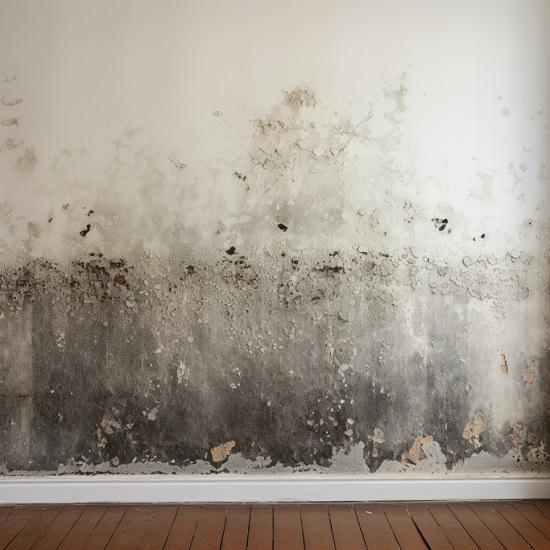Comprehensive Post Mold Remediation Procedures
Specialist Tips for Message Mold Remediation Success
In the world of mold remediation, successfully eliminating mold is just half the battle; real difficulty lies in stopping its reappearance. Post-remediation initiatives play an important role in ensuring a mold-free atmosphere in the lengthy term. By adhering to professional pointers and ideal practices, people can protect their rooms against mold and mildew resurgence and preserve a healthy indoor atmosphere. It is in this stage of the remediation process that focus to detail and proactive procedures really make a difference.
Screen Moisture Levels Regularly
Normal tracking of moisture levels is crucial in ensuring the performance of message mold remediation efforts. After completing mold and mildew removal treatments, keeping optimum moisture levels is important to stop mold and mildew re-growth and ensure a healthy indoor atmosphere. Surveillance moisture degrees permits early discovery of any type of spikes or fluctuations that might possibly cause mold renewal. High humidity degrees over 60% create a conducive environment for mold and mildew to prosper, making normal keeping track of a positive step to stop any type of future mold and mildew issues - Post Remediation verification.
Furthermore, developing a regular timetable for moisture checks, especially in risky areas such as cooking areas, basements, and restrooms, is a positive method to mold avoidance. By consistently keeping track of moisture levels, residential property proprietors can properly minimize the threat of mold reoccurrence and preserve a healthy indoor environment post-remediation.
Conduct Thorough Inspections Post-Remediation
Complying with the completion of mold and mildew removal procedures, it is crucial to carry out detailed assessments to confirm the efficiency of the remediation process. These post-remediation examinations are critical in making sure that the mold and mildew issue has been effectively resolved and that there is no reoccurrence or continuing to be mold development. Inspections ought to be carried out by qualified professionals who have knowledge in recognizing mold and mildew and analyzing indoor air quality.
During these examinations, different techniques such as aesthetic analyses, air tasting, and surface sampling might be utilized to thoroughly review the remediated areas. Visual evaluations include a comprehensive evaluation of the premises to look for any kind of visible indications of mold development or water damage. Air tasting aids in determining the airborne mold spore levels, while surface area tasting can detect mold and mildew fragments on surfaces.
Implement Correct Ventilation Strategies
After making certain the performance of the mold and mildew remediation procedure through complete assessments, the following vital action is to concentrate on executing correct air flow methods. Appropriate air flow is necessary in stopping mold and mildew reoccurrence by regulating dampness levels and advertising air circulation. mold removal drywall To achieve this, it is recommended to make use of exhaust followers in areas susceptible to high humidity, such as bathrooms and kitchen areas. Furthermore, opening up doors and windows when weather condition allows can help improve air movement and minimize moisture build-up. Air dehumidifiers and purifiers are also valuable devices in preserving optimum indoor air top quality.
Proper air flow not just help in protecting against mold development however additionally adds to the overall health and convenience of passengers. By making sure adequate ventilation throughout the home, you can decrease the danger of mold and mildew regrowth and develop a much healthier living atmosphere.

Usage Mold-Resistant Products for Repair Works
To boost the long-lasting efficiency of mold remediation efforts, incorporating mold-resistant materials for repairs is critical in reducing the risk of future mold and mildew growth. Mold-resistant materials are designed to endure dampness and inhibit mold development, making them an important selection for locations vulnerable to moisture and humidity. When repairing locations impacted by mold, utilizing products such as mold-resistant drywall, mold-resistant paints, and mold-resistant caulking can assist prevent mold and mildew recurrence.
Mold-resistant drywall is an exceptional alternative to conventional drywall in locations like cellars and bathrooms where moisture levels are greater. This kind of drywall has an unique layer that resists mold and mildew development also when exposed to damp conditions. Furthermore, making use of mold-resistant paints having antimicrobial agents can even more prevent mold growth on walls and ceilings.
In areas where wetness prevails, such as cooking areas and restrooms, using mold-resistant caulking around sinks, bathtubs, and windows can assist secure out water and prevent mold from taking hold in splits and holes. By purchasing these mold-resistant products throughout repair work post-remediation, you can significantly reduce the chance of future mold concerns and preserve a healthier interior environment.
Maintain Cleanliness and Address Water Issues
After mold remediation, it is vital to preserve a tidy environment to avoid the regrowth of mold and mildew. i was reading this Leakages, water breach, or high humidity levels can develop the perfect reproduction ground for mold, so it is crucial to repair any kind of water-related issues promptly.
To keep cleanliness, think about utilizing HEPA filters in vacuums and air purifiers to trap mold and mildew spores and prevent their circulation airborne. Ensuring proper air flow in locations susceptible to moisture accumulation, such as kitchen areas and shower rooms, can aid keep humidity levels in check. By remaining attentive regarding tidiness and addressing water problems promptly, you can successfully protect against mold reinfestation and preserve a healthy indoor atmosphere.
Verdict

In the realm of mold and mildew remediation, successfully eradicating mold is only half the battle; the true challenge lies in avoiding its reappearance. After completing mold and mildew removal treatments, keeping optimum humidity degrees is essential to stop mold and mildew re-growth and make certain a healthy indoor atmosphere. High moisture levels over 60% create a helpful setting for mold to grow, making normal monitoring a proactive procedure to stop any future mold and mildew concerns.
To boost the lasting efficiency of mold and mildew removal initiatives, including mold-resistant products for fixings is vital in mitigating the threat of future mold development. After mold removal, it is vital to keep a clean setting to stop the regrowth of mold.